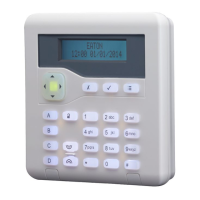Introduction
Page 3
users can assign other users to any of the partitions that the admin
user belongs to.
Normal user – A normal user can set and unset the system, but has
access to a limited number of user options. A normal user can, for
example, omit zones, change their own access code, add their own
proximity tag, view the log and operate outputs, but cannot add or
delete users.
In a partitioned system, a normal user is assigned to one or more
partitions, which are the only parts of the system that they can set and
unset.
Partition user (partitioned system only) – A partition user is similar to
a normal user, but has the added restriction that they must set and
unset their allocated partitions from keypads that are also assigned to
those partitions.
Duress Code (not available for i-on Compact) – A duress code user
can set or unset the system, but whenever the access code is used,
the control unit can, for example, notify the Alarm Receiving Centre
(ARC).
A duress code has no access to the user menu and cannot have a
remote control or proximity reader tag.
Note: The Installer must program your system to provide this feature,
and you must agree with your alarm installer and the ARC what action
the ARC should take on receiving a duress message.
Guard (not available for i-on Compact) – A guard user can only unset
the system when it is in alarm and set it again. A guard user has no
access to the user menu.
In a partitioned system, a guard user can be allocated to one or more
partitions, which are the only parts of the system that they can set and
unset.
Set Only (not available for i-on Compact) – This type of user can set
the system, but not unset it. A set-only user has no access to the user
menu.
In a partitioned system, a set-only user can be allocated to one or
more partitions, which are the only parts of the system that the user
can set.
Shunt Code (not available for i-on Compact) – This type of user code
is used only for activating and deactivating shunt groups (see page

